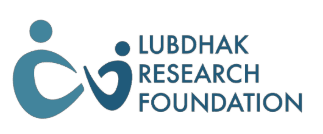Does your child avoid eye contact? Do you worry she may be deaf?
Published in Hindustan Times
Apr 08, 2018 08:57 IST
In autism awareness month, here’s a look at signs to watch out for, and advice from those who’ve been there.
Babies are typically friendly, noisy and easily distracted. In about 1.5% of cases worldwide, though, a toddler will avoid other children, become easily fixated on an object, word or toy. Often, these children will avoid speaking. It’s the long silences that get most cases of Autism Spectrum Disorder (ASD) diagnosed.
“Autism has no physical markers, so delayed speech is often what first gets noticed,” says developmental paediatrician Dr Samir Dalwai. “Most parents don’t realise that speech is not an independent milestone. If your child is unable to participate in meaningful conversation by age two, if most of their speech consists of repetitive words, you should see a doctor.”
As awareness among parents grows globally and in urban India — April was declared autism awareness month in 2007 as part of the effort to spread the word — experts caution against myths and partial truths.
Many parents believe, for instance, that autism can only be diagnosed around age 3. “Signs can first become visible as early as six months. Watch out for how your infant reacts to interaction,” says Dalwai. “Look for signs like a reluctance to make eye contact or respond to their name. Watch out for long periods of non-interaction. A baby should be engaging with you and enjoying it.”
SEEING THE SIGNS
Parental denial is often a factor in late diagnosis. And late diagnosis means that the child spends years without the help and the intervention to cope with their condition.
“Sometimes, the symptoms go unseen for a long time and associated conditions like attention-deficit / hyperactivity disorder (ADHD)may be considered the primary problem,” says Dr Priyanka Parikh, a consultant development paediatrician at Mumbai’s Jaslok hospital. Co-morbid conditions can include anxiety, aggression, ADHD and symptoms of obsessive compulsive disorder.
“The first step is neuropsychological assessment, which will give you an assessment of cognitive functioning,” says Dr Girish Nair, consultant neurologist at Apollo Hospitals, Navi Mumbai. Remedial education and behavioural therapy play a huge role during the early years, for children with ASD.
“I recently diagnosed an 18-year-old boy, and although he is undergoing therapy, earlier intervention would have helped him cope socially, academically and emotionally,” Dr Nair says.
OUTSIDE, LOOKING IN
If you feel like you’re on the outside of your child’s world, looking in, that could be a sign that you and your baby need help.
“There is an online test — M-Chat, or Modified Checklist for Autism in Toddlers, that parents can take as a first step,” says Anit Chhetri, a behavioural analyst who runs the Lubdhak Theraputic Solutions centre for children in Delhi.
M-Chat is a developmental screening tool for toddlers between 16 and 30 months of age. It’s not foolproof, and you needn’t panic if you don’t score very well on it, but you could use it as an indicator of whether you need professional intervention.
“Ideally, a behavioural analyst is the best person to reach out to if your child does test positive for ASD,” Chhetri says. “They can teach them age-appropriate skills, help identify and capitalise on strengths and begin the process of moving forward.”
About Me
The writer is a Board Certified Behavior Analyst having a Master’s degree in Applied Behavior Analysis from the University of North Texas. He runs a center called Lubdhak Research Foundation http://www.lrf-aba.com/ in Delhi and Shillong providing intervention to children and training graduates in this science.
